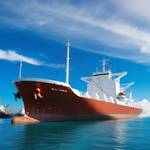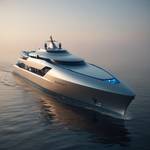Naval Architecture
Naval architecture is the field of engineering which deals with the design, construction and repair of ships, boats, and other marine vehicles. Ship and vessel design relies on many of the same technologies and engineering expertise found on shore, but achieving safe and effective operations at sea is the focus of a unique discipline.
Naval architecture is the familiar term for what is formally called marine engineering involving basic and applied research, design, development, design evaluation and calculations throughout the entire lifespan of a vessel. Preliminary design of the vessel, its detailed design, construction, trials, operation and maintenance, launching and dry-docking are the responsibilities of the engineer.
The basis of the discipline can be found in Archimedes’ principle, which states that the weight of a static floating body must equal the weight of the volume of water displaced by the object. This law determines not just the draft at which a vessel will float but also the angles that will be formed when equilibrium with the water has been achieved. Basic stages of ship design are focused on predicting the size of the ship that the sum of all possible weights will mandate. To make these predictions, a naval makes use of experience-based formulas that help calculate the approximate values necessary. The engineer can refine these figures to accurately predict the depth of water needed to float the vessel.
Naval architects are also tasked with calculating the static and dynamic stability of a given vessel, as well as the damage buoyancy and stability. Ship design calculations are also required before undertaking ship modifications, including conversion, rebuilding, modernization, and repair. Naval architecture participates in the formulation of safety regulations and damage control rules. Marine engineers are also involved in the approval and certification of ship designs in order to fulfill statutory and non-statutory requirements.





















